31
10
2010
Well rain could not stop people flocking to the exhibition

… well it was very early.
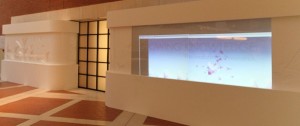
There will be a show-and-tell at Manchester of local VRE (Virtual Research Environment) projects on 16th December 2010 as part of the SIGGRAPH Chapter series of talks and events.
Comments : 3 Comments »
Categories : Dissemination, Event, Publication
16
03
2009
Two page spread on e-Dance, e-Curator and Archaeotools in a JISC e-Research/Digital Tools article.
http://www.jisc.ac.uk/publications/publications/inform24.aspx#traditionalsubjects
Issue 24 Spring 2009 – text from Judy Redfearn is above.
Comments : No Comments »
Categories : Dissemination, Publication
20
01
2009
After reporting the first year of the project’s work in Edinburgh at the 2008 e-Science All Hands Meeting, we’ve updated this in a new article:
Bailey, H., Bachler, M., Buckingham Shum, S., Le Blanc, A., Popat, S., Rowley, A. and Turner, M. (2009). Dancing on the Grid: Using e-Science Tools to Extend Choreographic Research. Philosophical Transactions of the Royal Society A, 13 July 2009, Vol. 367, No. 1898, pp. 2793-2806. [PDF]
This paper considers the role and impact of new and emerging e-Science tools on practice-led research in dance. Specifically it draws on findings from the e-Dance project. This two-year project brings together an interdisciplinary team combining research aspects of choreography, next generation of video conferencing, and Human-Computer Interaction analysis incorporating hypermedia and non-linear annotations for recording and documentation.
Keywords: Access Grid, Choreography, Dance, e-Science, Hypertext, Knowledge Cartography, Networked Performance
Comments : No Comments »
Categories : Dissemination, Publication
15
09
2008

It’s always a nice feeling when a book you’ve been working on for months finally lands on your doormat, and so what better way to kick off the week than to proudly hold up Knowledge Cartography: Software Tools and Mapping Techniques!
Co-edited with KMi Research Fellow Ale Okada, and NESTA Fellow Tony Sherborne, Creative Director at the Centre for Science Education at Sheffield Hallam U.
We summarise the book’s orientation in the preface:
While “sense†can be expressed in many ways (non-verbally in gesture, facial expression and dance, and in prose, speech, statistics, film…), knowledge cartography as construed here places particular emphasis on digital representations of connected ideas, specifically designed to:
I. Clarify the intellectual moves and commitments at different levels.
(e.g. Which concepts are seen as more abstract? What relationships are legitimate? What are the key issues? What evidence is being appealed to?)
II. Incorporate further contributions from others, whether in agreement or not.
The map is not closed, but rather, has affordances designed to make it easy for others to extend and restructure it.
III. Provoke, mediate, capture and improve constructive discourse.
e-Dance’s mission is to explore how an approach such as this — which emphasises clarity and rigour of thought, making relationships explicit between ideas — meshes with the modes of cognition and creativity that we find in choreography. Tomorrow at DRHA’08 in Cambridge, we’re hosting a panel session reflecting on the changing possibilities of the digital interface that performers, choreographers and audience may now encounter with dance. Thinking specifically about mapping memetic, intellectual worlds, we might muse the following:
- The concept of “memetic media†is quite an interesting one, pointing to the fact that e-Dance media fragments can have ideas behind them that are being crafted by the choreographer within a knowledge mapping tool
- In terms of the knowledge mapping interface, it’s possible that performers might not see this at all, if it is primarily a tool for the choreographer to reflect on discussions in rehearsal, to maintain her multimedia research archive, and to craft performance and/or research narratives (e.g. paths of ideas)
- Another scenario is that the knowledge mapping interface is exposed to performers, as a useful visualization for discussion, eg. of how ideas develop in the unfolding of a piece, or to show spatial configurations
- Yet another scenario is that the tools generate visualizations of memetic media fragments that are good enough to use as part of the performance, eg. dancers trigger, and/or respond to visualizations
- It is possible that visualizations of the connections between ideas, themes, moods and media fragments might literally provide an orienting map for audiences to follow the connections between activity in different locations and times.
Comments : No Comments »
Categories : Publication, Software
11
09
2008

http://www.allhands.org.uk/2008/programme/index.cfm
Just back from the UK e-Science All Hands Conference 2008 held at the University of Edinburgh. Our presentation was part of the Workshop led by Lorna Hughes, CeRCH http://kcl.ac.uk/iss/cerchfocusing on the use of e-Science in the Arts and Humanities – “e-Science in the Arts and Humanities: Early Experiments and Systematic Investigations”. The morning session, of which we were part, concentrated on arts/e-Science projects that, broadly speaking, fell into the ‘beyond text’ category. In other words those projects that were using e-Science tools as a means of both doing and presenting research in forms that were not primarily concerned with linguistic modes of communication. Sally-Jane Norman gave a great presentation in this session on her AMUC project (Associated Motion capture User Categories)  http://culturelab.ncl.ac.uk/amuc/ . I was particularly interested in her thinking about the use of mo-cap for social interaction analysis.  She also clearly articulated the significance of tacit knowledge in embodied practices and the need to recognise and assign value to this methodologically.
Our presentation was based on our paper that has been shortlisted for the peer review process for publication in the Royal Society’s Philosophical Transactions A. Here is a pre-print version of the article:
Bailey, H., Bachler, M., Buckingham Shum, S., Le Blanc, A., Popat, S., Rowley, A. and Turner, M. (2009). Dancing on the Grid: Using e-Science Tools to Extend Choreographic Research. Philosophical Transactions of the Royal Society A, 13 July 2009, Vol. 367, No. 1898, pp. 2793-2806. [PDF]
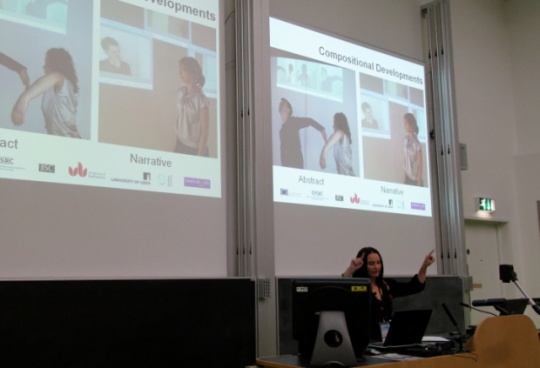
Comments : 2 Comments »
Categories : Dissemination, Publication
24
08
2008
 Â
Â
Sita and I went to Singapore at the end of July to present the project paper titled “e-Dance: Relocating choreographic practice as a new modality for performance and documentation”. The conference took place at venues throughout Singapore including the Singapore Management University, National University of Technology, Nang Yang University and Lasalle College of the Arts.
 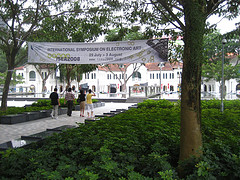 Â
 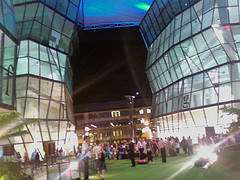
We both had a really interesting time. There were some great presentations. The key-notes by Ken Mogi on Creativity and the Brain and Lev Manovich on Visualising Culture were both particularly relevant to the project. Ken Mogi constructed a view of creativity from the perspective of Evolutionary Psychology. He drew parallels between memory and creativity in terms of brain function. He talked about the ‘feeling of knowing’ as referred to by Psychologists and Neuroscientists. This seems particularly relevant in relation to Simon’s previous post.Â
There was a juried exhibition as part of the symposium and various shows that included a range of installation art work, the majority of which focused on interactivity.Â
 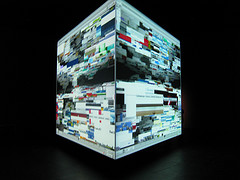 Â
 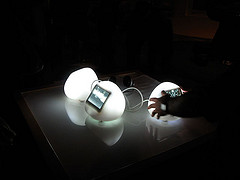
The most compelling performance experience was “True” a Japanese dance-theatre work created collaboratively by an interdisciplinary team of artists and technologists (some of which were members of Dumb Type). The integration of technology into the live work was so subtlely managed, it was a visual, visceral, auditory treat.
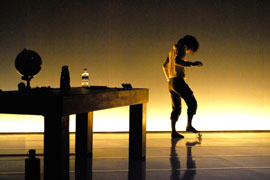
Comments : No Comments »
Categories : Dissemination, Publication
24
08
2008
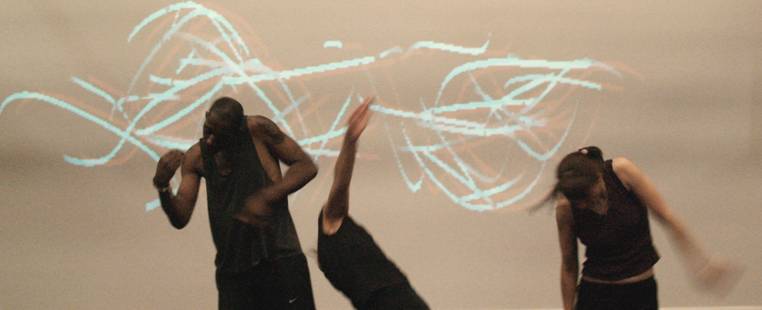 Â
Â
Martin and I, together with Dance Artist James Hewison, who has contributed to several of the research intensives, presented a paper at EVA in London in July. The presentation titled “Choreographic Morphologies”, outlines the key findings from the Morphologies practice-led research. The conference proceedings have been published by British Society of Computing.
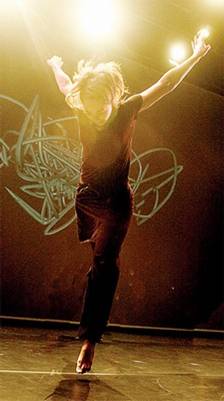
Comments : No Comments »
Categories : Dissemination, Publication
16
05
2008
An abstract has been submitted to the UK e-Science All Hands Meeting “Crossing Boundaries” conference to be held this September at the National e-Science Centre, Edinburgh University. The title is ‘Dancing on the Grid: the use of e-Science tools to extend choreographic knowledge and develop new practice-led research methodologies’.
Comments : No Comments »
Categories : Dissemination, Publication
1
05
2008
This is a draft of the paper that will be presented at ISEA2008 in Singapore this July.  Â
isea-paper-draft.pdf
Comments : No Comments »
Categories : Dissemination, Publication
24
04
2008
We have submitted a proposal for a talk at the Access Grid Retreat 2008 in Vancouver, British Columbia, Canada. Please have a look at our paper
edance_agr2008Â
and comments are welcome.
Comments : 2 Comments »
Categories : Publication















